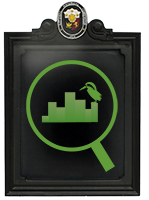 Parish Church of Nuestra Señora de la Porteria of Daraga | Simbahan ng Daraga Marker
Parish Church of Nuestra Señora de la Porteria of Daraga | Simbahan ng Daraga MarkerParish Church of Nuestra Señora de la Porteria of Daraga | Simbahan ng Daraga Marker is a National Cultural Treasure, National Museum (referring to the Eastern and Western Façade, Belfry and Baptistry of the Church); Marked Structure, NHCP; Local Cultural Property - Provincial Cultural Treasure, Albay located at Daraga, Albay, Region V.
Marker Text:
Simbahan ng Daraga
Ipinatayo ng mga paring Pransiskano na yari sa bato, 1773. Dito lumipat ang mga mananampalataya ng Cagsawa matapos masira ang kanilang simbahan sa pagsabog ng Mayon, 1814. Inialay sa patronato ni Nuestra Señora de la Porteria, 1854. Ginamit na himpilan ng mga Hapones at nasira noong Ikalawang Digmaang Pandaigdig, 1945. Muling ipinaayos, 1971–1973. Halimbawa ng istilong Baroque ayon sa kahusayan ng mga manggagawang Filipino noong panahon ng mga Espanyol.
Date Unveiled: October 16, 2008
_____
The church is known for its Churrigueresque architectural style in its façade, a fine example of Baroque architecture. The façade and its walls are made out of volcanic rocks, which are rich in the area. The current white façade is the result of a coating of lime for protection from deterioration.
It is one of the few churches in the country that has four spiral columns known as Solomonic columns or salomónicas. The four columns bear round medallions, each with carved images of the four Evangelists. Another characteristic of the façade, which is unique to the church, is the absence of either vertical columns or horizontal cornices. Engraved on the façade and the adjacent belfry are statues of saints, mostly Franciscans, and rare religious seals such as the coats of arms of the Franciscan order, the Pope's tiara with the keys, and the five wounds or stigmata of St. Francis which survived the Second World War.
The arch over the entrance has an inscription in Latin which reads, "Bene fundata est domus Domini supra firmam petram" (Well founded is the house of the Lord on firm rock). Symbols carved out of stones of the three theological virtues (hope, faith, charity) and the Eucharist are also engraved.
The octagonal belltower, located on the left side of the church, has carved images of the twelve apostles distributed in the base's six faces. The tower has four levels, each tapered upwards and topped with a dome and cross.